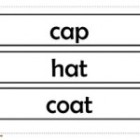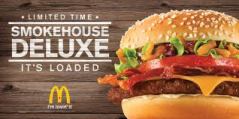 Words matter. We all know that.
Words matter. We all know that.
The difference between someone choosing life-changing surgery might be whether you tell them it has an 80% survival rate, or a 20% mortality rate.
We know it as conversationalists, when we use the wrong word and watch our friend’s face fall.
We know that as advertisers. It’s why we change a runny yoghurt into a ‘probiotic drink’, mark it up 100% and sell it as a health product. It changes the frame of reference, both for the category its sold in, and the consumers who buy it.
Now this study about how words prompt us what to see. If prompted with ‘dog’, participants were more likely to see the image of the dog being shown – an aspect of priming perhaps. But also proof that language and sight are intertwined. That language helps us order our world and also makes sense of it.
The most interesting part is the last:
Lupyan now wants to study how the language we speak influences the ability of certain terms to help us spot images. For instance, breeds might be categorised differently in different languages and might not all become visible when volunteers hear their language’s word for “dog”.
It’s something literary criticism has struggled with before. How is the signified – the object itself – related to the referent – the word? And how does this change across languages and cultures?
There’s an amazing two parter here about how we divided up the colours in our cultures, naming them differently. What is distinctly either blue and green to us might just be purueda in Korean.
And what fascinates me too is the words that simply can’t be translated, full of the promises and shapes of hidden cultural structures, that have risen to the surface in some of the world’s languages, but not others. My favourite’s iktsuarpok – to keep going to the front door and looking outside to check if someone you’re waiting for is coming down the road.
What we haven’t studied is how this matters. Do you see more vividly, do you notice individual objects more closely, if those colours are separated? Do you care more about certain breeds if you classify them as ‘dog’ over ‘large rabbit’? The Eskimos may not have a hundred words for snow, but the myth that they do has captured our imaginations.
When we carve up and name our world, language matters.
We just don’t know how yet.





